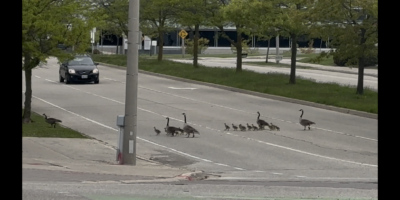In their iconic teal-green uniforms, the members of the custodian team are easy to recognize. Anyone who happens to be passing the the corridors of the engineering building late at night will have seen their carts and we all appreciate the clean buildings that we study in. Many of us are familiar with their faces but when was the last time you actually met them? For example, Mila is a member of the custodian team who cleans up the messes we leave behind.
“I came to Canada in 1977 from Yugoslavia. I had originally only wanted to stay here for a few years and then go back, but life is always changing. After having kids, and seeing the war back home in the 90’s, I decided for good that I was going to stay here,” said Mila.
Like Mila, almost all of the custodian staff responsible for the engineering buildings are immigrants from foreign countries, a similar scenario to many of the students currently in engineering. They came to Canada seeking a better life and a brighter future not only for themselves, but for the next generation. In order to reach Canada, however, many of them took extraordinary measures, and some even risked their life in the process.
Al, a gentleman easily recognizable by his cheery smile, glasses, and friendly demeanour echoes this sentiment. “I was a young kid back then, only 19 when I moved here. I came here because I was tired of the dictatorship government in Azores. It’s a tiny island in the middle of the Atlantic, ruled by Portugal.”
However, the emigration process was never easy, and it holds especially true for a country ruled under a dictatorship. “For me to leave the country, I had to join the Army and do my service first. So I was deployed to Africa for two years during the Guinea-Bissau War of Independence. Twenty-six months and sixteen days, that was the exact number, it’s something that you don’t forget,” Al recalls vividly. “The war over there was like our Vietnam. There were a lot of traumatic things I witnessed, but you put it all behind you.”
Many of the custodians also voice the notion that political oppression was another contributing factor in shaping their decision to immigrate to Canada. Karol, for instance, left his homeland of Czechoslovakia after much of Eastern Europe fell into the strict grip of communist regimes.
“I came to Canada in 1978, from Czechoslovakia. My family lived close to the German border in Czechoslovakia, in Sudetenland. After WWII, it was ruled under a communist dictatorship,” Karol recalled. “My journey started when I bought a ticket for a plane headed for Cuba. When the plane had to refuel in Montreal, that was when I made my escape. There were undercover StB (State Security) agents from Czechoslovakia on the plane to make sure nobody defects. But I realized that this was my only chance and I snuck away to the immigration office at the airport and requested political asylum. If the StB agents caught me, I would have been put into prison back home for a long time, or even killed. When the immigration officers asked me whether I wanted to pick up my suitcases from the plane, I said, ‘Nope, I’m not going back in there.’”
However, reaching Canada was only the first step. Adjusting to new lives in a foreign country isn’t always easy. Language barriers coupled with diminishing prospects of employment often prove to be difficult. “I had a lot of problem with jobs. This job is the first job that I am satisfied with since coming to Canada. I was an agricultural engineer with more than 20 years of experience back in former Yugoslavia, but when I moved here, I couldn’t find a job in my field,” said Momčilo, known affectionately as “Momo” by his peers and many students.
Even in the presence of stable job prospects, employment was still never guaranteed, as Maria remembers her own employment history. “I worked for the government for thirteen years; then the division I worked for closed down and I found myself working briefly at Colonial-Cookies before coming here. It’s been nine years now.”
It is unspoken within organizations, but new immigrants are often the first batch of employees to be laid off when it comes to downsizing. The specific reasons are complex, but communication skills and prejudice against newcomers usually play a significant role.
In the midst of the discussion concerning the employment woes faced by everyone, Mila spoke out, “You have to support the kids no matter what.”
Momo quickly reflected upon this and responded, “Me and my wife worked at multiple jobs, and we try to make money the best we can to help our kids get through university. I am happy because I have two children, and they both have a good education and good jobs. My daughter works at Scotiabank, and my son works at Mozilla, I’m proud of them.”
“I also have two kids, a boy and a girl. My son is 22, and my daughter is 16,” said Maria.
Many of the custodians’ children are no different from us, who embody the hopes and dreams of their parents. Indeed, it is the custodians who clean up after us, pamper us, and who, just like your parents, believe in the futures of the youth they are caring for.
So strike up a conversation with the custodians once in a while and let them know how much appreciate their work. They are some of the friendliest people you’ll ever meet, you have my word.




Leave a Reply